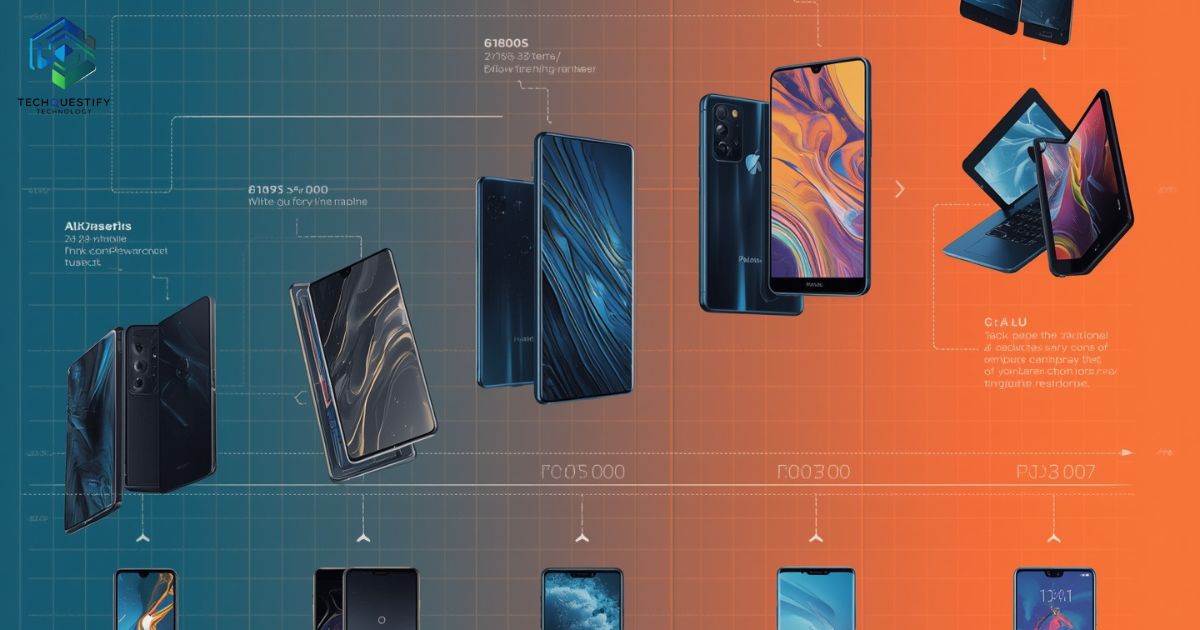Introduction
Foldable phones are redefining the way we look at modern smartphones, offering a unique balance between portability and productivity. With flexible displays, these innovative devices can transform from compact phones into tablet-like screens, making multitasking more efficient than ever.
Leading brands like Samsung Galaxy Z Fold, Huawei, and Motorola have already showcased their vision for the future, while rumors of a potential foldable smartphone from Apple fuel even greater excitement. As a piece of next-gen mobile technology, foldables represent more than a passing trend—they are a glimpse into the future of mobile design, innovation, and user experience.
The Past: How Foldables Went From Concept to Reality
Early Concepts (2008–2013)
- Nokia & Motorola experiments: Early patents and prototypes featured flexible displays, but the technology was fragile.
- Samsung’s YOUM display (2013): At CES 2013, Samsung showcased a bendable OLED concept—hinting at the possibility of folding phones.
- Consumer skepticism: Most people dismissed foldables as science fiction, believing glass couldn’t bend without breaking.
First Real Products (2018–2019)
- Royole FlexPai (2018) – The first commercially available foldable phone. It was bulky, expensive, and fragile, but it proved foldables were possible.
- Samsung Galaxy Fold (2019) – Samsung launched its first Fold, but it faced backlash after review units broke due to hinge issues. The company had to recall and re-engineer the device before re-releasing it.
Lessons Learned
The early years showed that durability was the biggest challenge. Hinge mechanisms trapped dust, displays cracked under pressure, and prices were far too high. But these failures were necessary stepping stones for the foldables we see today.
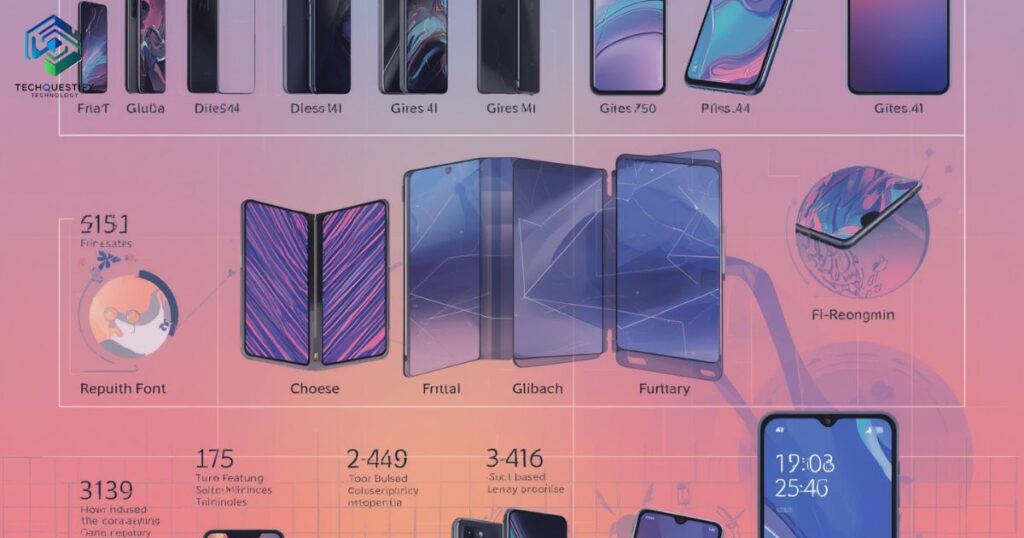
The Present: Foldables Enter the Mainstream
Samsung Leads the Way
By 2025, Samsung has refined its foldables to be:
- Thinner and lighter than ever (Galaxy Z Fold 7 is 26% thinner than its predecessor).
- Durable enough for daily use, with over 200,000 folds tested per device.
- AI-powered, with features like real-time translation and multitasking via Gemini AI.
Samsung has also expanded its lineup with affordable options like the Galaxy Z Flip 7 FE, priced at $899. This makes foldables accessible to younger audiences who want style and innovation at a lower cost.
Google’s Role
Google’s Pixel 10 Pro Fold (rumored for 2025) is set to become the first foldable with a dust-proof IP68-rated hinge. This solves a critical pain point—durability. Google’s strategy focuses on AI and pure Android optimization, ensuring foldables feel smooth and intuitive.
Apple on the Horizon
- Analysts expect Apple to launch its first foldable iPhone in 2026 as part of the iPhone 18 lineup.
- Price is expected around $1,999, targeting premium buyers.
- Apple is rumored to be working with Samsung Display to develop a crease-free folding screen, solving one of the last big issues in foldable displays.
Adoption Today
- Market Share: Foldables represent about 1–1.5% of smartphone sales, but growing fast.
- Consumer Interest: Surveys show over 40% of consumers are interested in buying a foldable in the next 2 years, once prices drop.
- App Ecosystem: Apps like YouTube, Netflix, and Microsoft Office are optimized for dual-screen or foldable modes, making productivity and entertainment seamless.
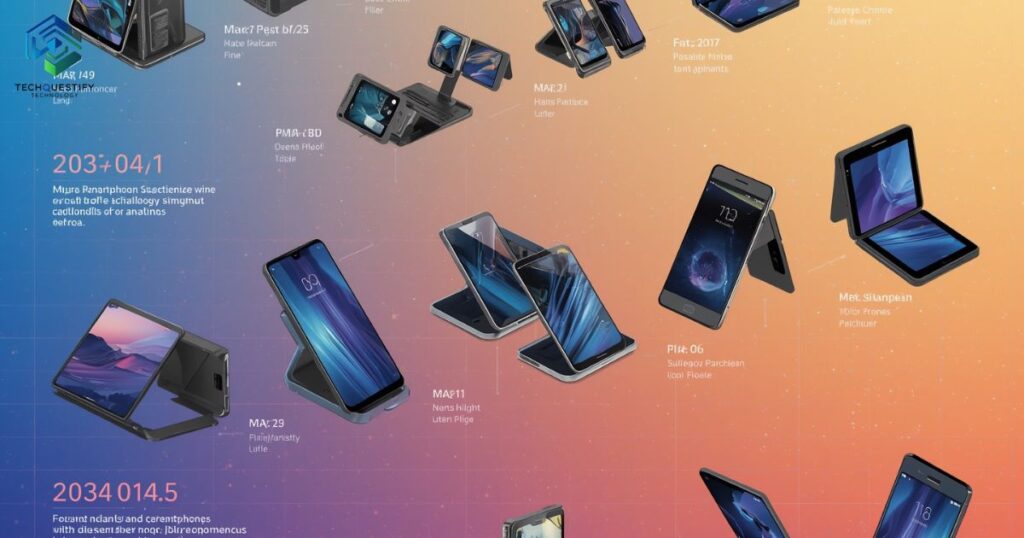
The Future: Where Foldables Are Headed
1. Rollable Displays
The next stage after foldables is rollable smartphones. These devices will roll out into larger displays on demand—like a scroll or extendable tablet. LG, Oppo, and TCL have already shown rollable prototypes.
2. Hybrid Devices
Foldables may evolve into laptop-tablet hybrids, replacing the need for both a phone and a computer. Imagine carrying one device that unfolds into a workstation.
3. AR & VR Integration
Foldable displays could merge with augmented reality (AR) features, turning phones into AR hubs that complement AR glasses. Apple, in particular, may connect its foldable iPhone with the Vision Pro headset ecosystem.
4. Durability Breakthroughs
Expect advancements in:
- Crease-free screens (already in development).
- Ultra-scratch-resistant glass (beyond Gorilla Glass).
- Self-healing materials that fix micro-scratches automatically.
5. Price Drops & Mass Adoption
Like all new tech, foldables will get cheaper. By 2028, expect mid-range foldables in the $500–$700 range, making them mainstream.
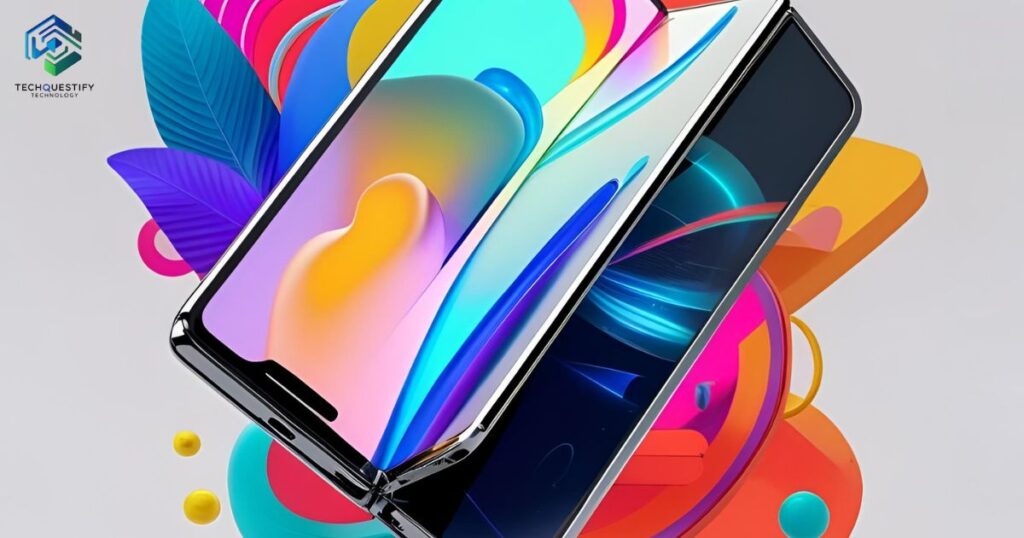
The Past: How Foldables Went From Concept to Reality
| Year | Device / Event | Significance | Challenge |
| 2013 | Samsung YOUM Display demo | First bendable OLED shown at CES | Too fragile for mass use |
| 2018 | Royole FlexPai | First commercial foldable | Bulky, expensive, not practical |
| 2019 | Samsung Galaxy Fold (1st Gen) | Major brand enters foldables | Screen broke easily, hinge dust issues |
| 2020–2021 | Z Fold 2 & 3 | Improved durability + water resistance | High price ($1,799+) |
| 2022–2023 | Foldables gain traction | Samsung leads, Huawei follows | Still niche in adoption |
👉 Key Takeaway: The past was full of experiments and failures, but each step brought foldables closer to mainstream acceptance.
The Present: Foldables Enter the Mainstream
Samsung’s Current Strategy
| Model | Year | Price | Unique Features | Target Audience |
| Galaxy Z Fold 7 | 2025 | $1,999 | 26% thinner, AI Gemini, multitasking | Professionals, premium buyers |
| Galaxy Z Flip 7 | 2025 | $1,299 | Slim, stylish, portable | Lifestyle, younger buyers |
| Galaxy Z Flip 7 FE | 2025 | $899 | Affordable entry foldable | Students, mass-market |
👉 Why it matters: Samsung is no longer limiting foldables to luxury buyers. It’s making them accessible to every market tier.
Google’s Foldable Position
| Device (Rumored) | Year | Highlight Feature | Differentiator |
| Pixel 10 Pro Fold | 2025 | Dust-resistant IP68 hinge | First foldable with full dust protection |
| Pixel Fold (1st Gen) | 2023 | Compact design | Stock Android optimization |
👉 Why it matters: Google is carving a niche with AI-first durability innovations.
Apple’s Foldable Plans
| Rumored Device | Expected Year | Price Estimate | Rumored Feature | Risk Factor |
| iPhone Fold (iPhone 18 series) | 2026 | ~$1,999 | Crease-free display via Samsung Display partnership | Reliance on Samsung as supplier |
👉 Why it matters: Once Apple enters, foldables will shift from niche to mainstream.
The Future of Foldables
| Future Trend | Example Companies | Expected Impact |
| Rollable Displays | LG, Oppo, TCL | Replace tablets with extendable phones |
| Hybrid Devices | Samsung, Apple | One device replaces phone + laptop |
| AR/VR Integration | Apple Vision Pro + iPhone Fold | Seamless AR experiences |
| Self-Healing Screens | LG R&D, Samsung patents | Fix scratches automatically |
| Mid-Range Foldables ($500–700) | Xiaomi, Motorola | Mass adoption in developing markets |
👉 Why it matters: Foldables will evolve into everyday essentials, not just luxury gadgets.
Why Foldables Matter for the Smartphone Industry
- Innovation revival: After years of stagnation, foldables bring excitement back.
- New revenue streams: Premium pricing and accessories drive profits for manufacturers.
- Ecosystem lock-in: Apple, Samsung, and Google will tie foldables into their ecosystems, making it harder for consumers to switch brands.
- Cultural shift: Just like the first iPhone redefined communication, foldables could redefine how we multitask, work, and consume media.
Conclusion
From the first bendable OLED concepts in 2013 to the ultra-slim Galaxy Z Fold 7 in 2025, foldables have traveled a long road. They’ve gone from fragile novelties to powerful productivity tools that challenge the very definition of a smartphone.
Today, Samsung leads, Google innovates, and Apple prepares to enter. The future points toward rollables, hybrid foldables, and crease-free displays—all while prices drop and adoption spreads.
Foldables are not just another gimmick. They represent the next era of mobile innovation, where devices are no longer limited to flat slabs. In just a few years, what seems premium today could be the everyday smartphone of tomorrow.
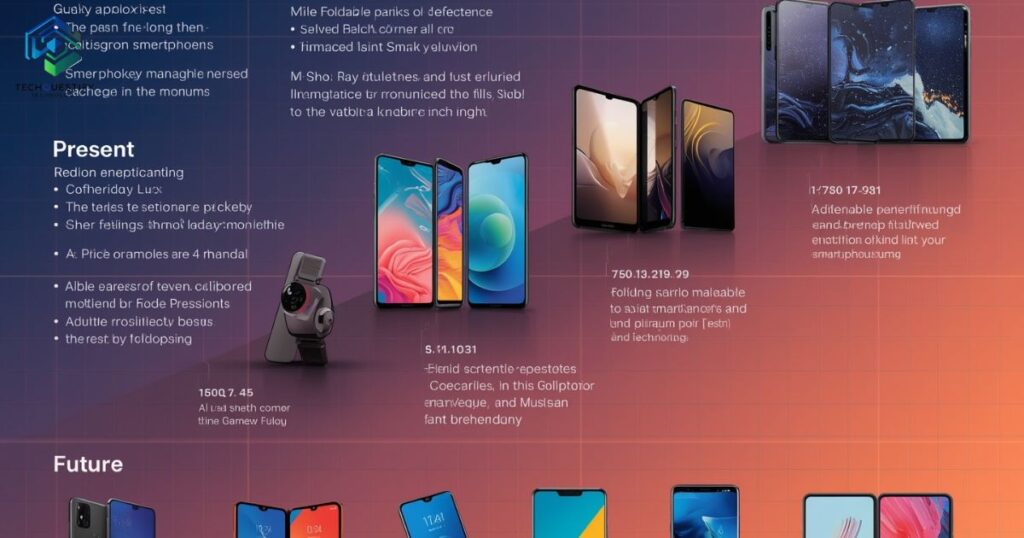
So the real question is: Will you wait for Apple’s foldable, or join Samsung and Google in shaping the future right now?
FAQs About Foldable Smartphones
1. What is a foldable smartphone?
A foldable smartphone is a device with a flexible OLED screen that allows it to fold in half—either like a book (inward fold) or like a flip phone (clamshell). This design gives users a larger display in a compact, portable form.
2. Are foldable phones durable?
Modern foldable phones like the Samsung Galaxy Z Fold 7 are far more durable than early models. They can withstand over 200,000 folds in testing, use ultra-thin glass, and have improved hinge mechanisms. However, they’re still more fragile than traditional slab phones.
3. Which companies make foldable smartphones?
The main players are Samsung, Google, Huawei, Oppo, Xiaomi, and Motorola. Apple is rumored to join in 2026 with a foldable iPhone. Samsung currently leads the market with the Galaxy Z Fold and Flip series.
4. Why are foldable phones so expensive?
Foldables use advanced flexible OLED screens, complex hinge systems, and new materials, which drive up costs. As production scales and competition increases, prices are expected to fall—potentially reaching $500–700 mid-range foldables by 2028.
5. Do foldable phones have a crease?
Yes, most foldables today still have a visible crease where the screen folds. But companies like Samsung and Apple are working on crease-free displays, with Apple rumored to collaborate with Samsung Display for a smoother folding screen.
6. What are the benefits of foldable smartphones?
- Larger displays without sacrificing portability
- Multitasking with multiple apps at once
- Better entertainment and gaming experiences
- Premium futuristic designs
- Tablet-like functionality in a phone
7. What are the disadvantages of foldable phones?
- Higher prices compared to standard phones
- Fragility and hinge-related concerns
- Shorter battery life in some models
- Visible crease on the display
- Limited app optimization for foldable modes
8. Will Apple release a foldable iPhone?
Analysts expect Apple to launch a foldable iPhone in 2026, possibly as part of the iPhone 18 lineup. It’s rumored to feature a crease-free display, priced around $1,999, targeting premium buyers.
9. How long do foldable screens last?
Most modern foldables are tested for 200,000+ folds, which equals about 5 years of daily use if you open and close your phone 100 times a day. However, real-world durability also depends on how carefully the device is handled.
10. Are foldable phones worth buying now?
If you love cutting-edge tech, foldables like the Samsung Galaxy Z Fold 7 or Pixel Fold offer unmatched multitasking and entertainment features. However, if you prefer affordability and long-term reliability, you may want to wait until prices drop and durability improves further.
11. What is the future of foldable smartphones?
The future includes rollable displays, hybrid phone-laptop devices, AR/VR integration, crease-free screens, and self-healing materials. By 2030, foldables could make up 10–15% of the smartphone market, becoming mainstream.
12. Are foldable phones good for business and productivity?
Yes, foldables are excellent for productivity. Their larger displays allow users to run multiple apps side by side, making it easier to handle emails, video calls, and documents simultaneously—turning them into mini workstations on the go.

